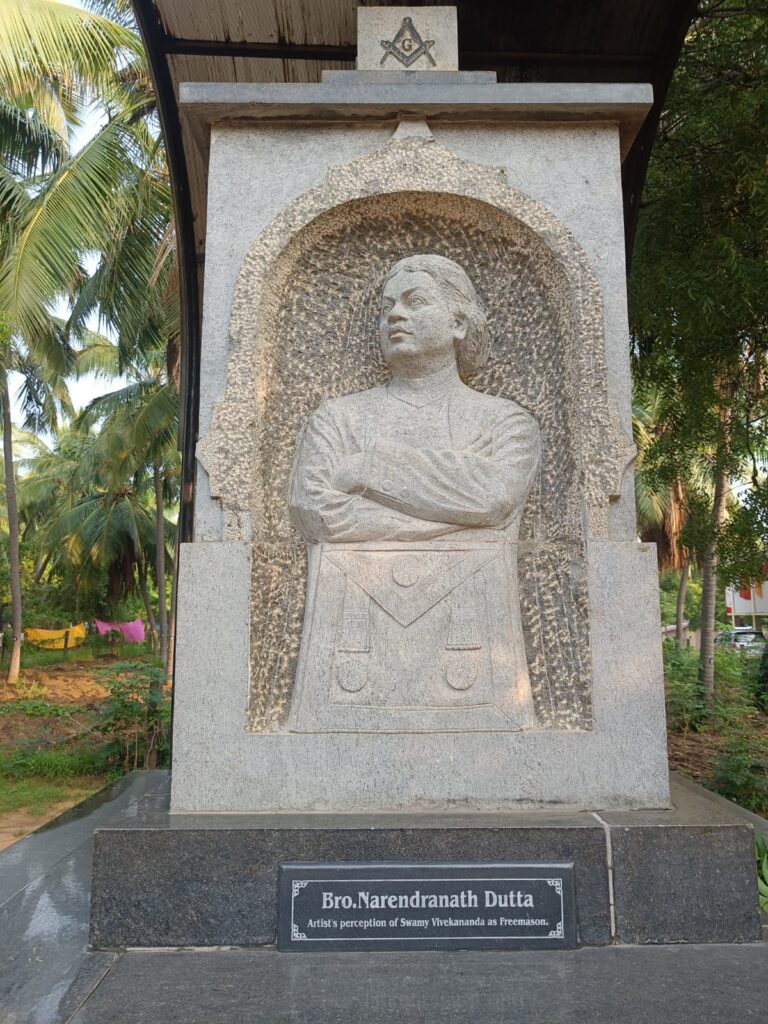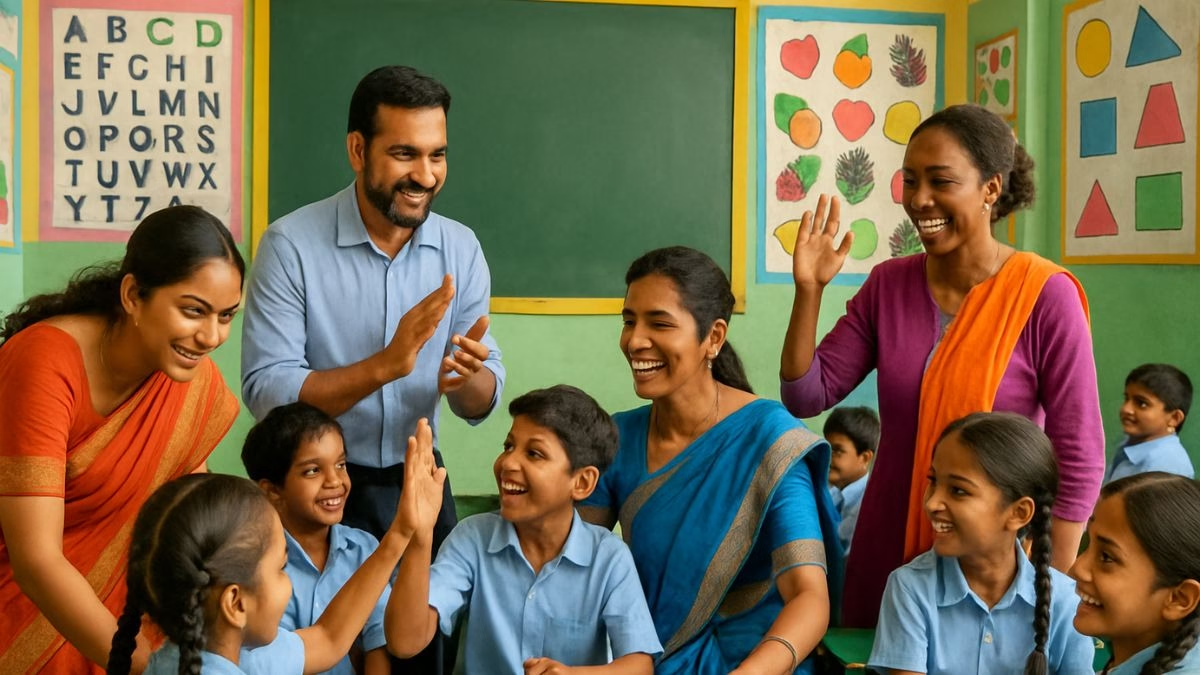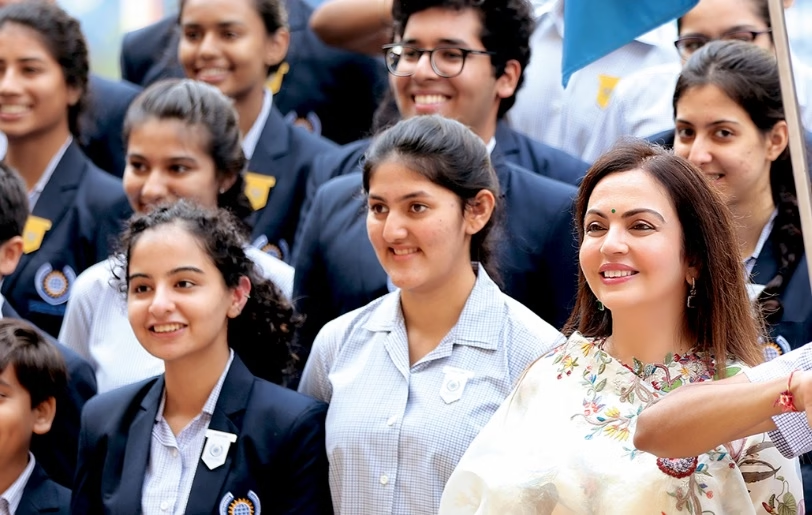EDUNEWS & VIEWS
How Swami Vivekananda Paved the Way for India’s Premier Science Institution
On the occasion of Swami Vivekananda’s birth anniversary, EdPublica highlights his pivotal role, alongside Sister Nivedita, in inspiring the creation of the Indian Institute of Science, India’s top-ranked higher education institution

The Indian Institute of Science (IISc), today a global leader in scientific research, and India’s top-ranked higher education institution, owes its origin to a confluence of visionary ideas and unwavering dedication to national progress. While the name of eminent industrialist Jamsetji Tata often stands at the forefront of the institute’s establishment, two lesser-known figures played pivotal roles in shaping its foundations: Swami Vivekananda, a revolutionary Indian spiritual leader the world has ever seen, and his most loyal disciple Sister Nivedita. Their influence not only propelled the institution’s creation but also laid the groundwork for India’s self-reliance in science and technology.
The Visionary Dialogue: Swami Vivekananda and Jamsetji Tata
In the summer of 1893, two individuals—both from vastly different walks of life—found themselves sharing a ship journey from Japan to Canada. One was Swami Vivekananda, a 30-year-old monk, unknown to the world but filled with boundless energy and deep wisdom; the other was Jamsetji Tata, a prominent industrialist with a forward-thinking vision for India’s economic future. Their discussions during this journey would have a profound impact on the future of Indian science.
Swami Vivekananda, a leader whose brilliance and eloquence were so exceptional that even a Western leader could not come close to him at that time, passionately spoke of India’s potential to transition from merely trading raw materials to manufacturing its own goods. He emphasized the need for scientific and technological education to fulfill the country’s needs and help it become self-sufficient. He envisioned India not just as a land of spirituality, but as a land of innovation, equipped to face the challenges of a rapidly modernizing world.
Tata, already an influential figure in India’s industrial landscape, was deeply moved by Vivekananda’s ideas. Although the monk’s vision was far-reaching and idealistic, Tata recognized its importance and resolved to act upon it. This was the beginning of Tata’s long-standing commitment to the advancement of science in India.
Tata sought Vivekananda’s guidance to create a place where India’s spiritual ascetics could devote themselves to the advancement of science and technology.
The Seed of an Institution: Tata’s Pledge and Vivekananda’s Guidance
In 1898, five years after their first meeting, Tata wrote to Swami Vivekananda, after the latter’s much-celebrated and adored foreign trips that rocked the West, recalling their conversation on the ship. In his letter, Tata spoke of his vision for a research institute that would combine scientific research with the development of India’s humanistic traditions. Tata committed a substantial sum—200,000 pounds sterling (about INR 30 lakh at the time)—to establish a research institute that would focus on solving problems related to tropical diseases, Indian history, and the nation’s neglected scientific fields. Tata sought Vivekananda’s guidance to create a place where India’s spiritual ascetics could devote themselves to the advancement of science and technology.
“I trust you remember me as a fellow-traveller on your voyage from Japan to Chicago. I very much recall at this moment your views on the growth of the ascetic spirit in India, and the duty, not of destroying, but of diverting it into useful channels.
I recall these ideas in connection with my scheme of a Research Institute of Science for India, of which you have doubtless heard or read. It seems to me that no better use can be made of the ascetic spirit than the establishment of monasteries or residential halls for men dominated by this spirit, where they should live with ordinary decency, and devote their lives to the cultivation of sciences – natural and humanistic. I am of opinion that if such a crusade in favour of an asceticism of this kind were undertaken by a competent leader, it would greatly help asceticism, science, and the good name of our common country; and I know not who would make a more fitting general of such a campaign than Vivekananda,” Tata wrote in the letter.
In his reply letter, Vivekananda said (which was published in the April 1899 issue of Prabuddha Bharata, a monthly magazine started by Vivekananda), “We are not aware if any project at once so opportune and so far-reaching in its beneficent effects was ever mooted in India, as that of the post-graduate research university of Mr. Tata. The scheme grasps the vital point of weakness in our national well-being with a clearness of vision and tightness of grip, the masterliness of which is only equalled by the munificence of the gift with which it is ushered to the public.
It is needless to go into the details of Mr. Tata’s scheme here. Every one of our readers must have read Mr. Padsha’s lucid exposition of them. We shall try to simply state here the underlying principle of it. If India is to live and prosper and if there is to be an Indian nation which will have its place in the ranks of the great nations of the world, the food question must be solved first of all. And in these days of keen competition, it can only be solved by letting the light of modern science penetrate every pore of the two giant feeders of mankind: agriculture and commerce.”

While Swami Vivekananda could not directly lead the initiative due to his responsibilities with his monastic order, he wholeheartedly supported Tata’s vision. He encouraged his disciples to take the project forward, though he could not dedicate his time to its realization.
Sister Nivedita: A Tireless Advocate for Science and Self-Reliance
Swami Vivekananda’s disciple, Sister Nivedita, emerged as a crucial figure in the realization of Tata’s vision. Nivedita, who was deeply committed to India’s intellectual and cultural revival, took it upon herself to champion the cause of the research institute. Her writings in various English-language newspapers were instrumental in rallying public support for the project. In 1899, Nivedita wrote:
“We are not aware if any project is at once so opportune and so far-reaching in its beneficent effects as that of the Post-Graduate Research University of Mr. Tata. The scheme grasps the vital point of weakness in our national well-being with a clearness of vision and tightness of grip.”

Her powerful advocacy helped keep the vision alive despite challenges from the British colonial administration. Nivedita’s activism, coupled with her close relationship with prominent international thinkers, played a significant role in generating support for Tata’s ambitious plan.
Resistance and Struggle: The British Roadblocks
Despite Tata’s substantial pledge and Nivedita’s advocacy, the British establishment was initially unsupportive of the idea. When Tata presented the idea to Lord Curzon, the Viceroy of India, Curzon dismissed it as unfeasible. He doubted that Indians had the capacity for scientific research and questioned whether an institute focused on both science and humanities could succeed. Even after Tata met the Viceroy’s skepticism with steadfast commitment, the project was stalled.
The British colonial officials’ resistance continued when Sir William Ramsay, a well-known scientist, was appointed to inquire into Tata’s proposal. Ramsay, though a Nobel laureate in Chemistry, failed to transcend colonial biases. He rejected the idea, citing the improbability of blending scientific research with humanities. Despite the setbacks, Sister Nivedita refused to let the vision fade. While in London, she lobbied influential figures such as William James, the renowned American philosopher, and Patrick Geddes, a Scottish intellectual. Their advocacy bolstered the project’s credibility, with James even emphasizing that the institution should be managed entirely on national lines, free from government control.
The Final Approval: The Indian Institute of Science
Tragedy struck when Jamsetji Tata passed away in 1904, two years after Swami Vivekananda’s death. However, Tata’s dream was eventually realized after his death, when Lord Minto, the Viceroy who succeeded Lord Curzon, finally approved the proposal in 1909. The institute was originally intended to be located in Bombay, but it was ultimately established in Bangalore, thanks to the generous gift of 370 acres from the Maharaja of Mysore, Krishnaraj Wadiyar, who had been a devoted disciple of Vivekananda. His father H.H. Chamaraja Wadiyar, had been a staunch follower of Vivekananda and was greatly involved in sending him to the West.
The institute went on to become the intellectual backbone for a host of specialized institutions in India, including the Tata Institute of Fundamental Research and the Indian Institutes of Technology.
Unrecognized Contributions: The Role of Swami Vivekananda and Sister Nivedita
While Jamsetji Tata’s name is forever associated with the IISc, the contributions of Swami Vivekananda and Sister Nivedita are often overlooked. Vivekananda’s ideas on channeling India’s spiritual energy towards practical, scientific advancement laid the ideological foundation for the institute. Sister Nivedita’s tireless advocacy ensured that Tata’s vision remained alive, even in the face of intense opposition.
Today, the IISc stands as a testament to the dreams of these extraordinary individuals—visionaries who understood the critical link between scientific progress and national self-reliance. While the world remembers Tata for his industrial foresight, it is important to recognize the role played by Vivekananda and Nivedita in laying the intellectual and spiritual groundwork for what would become India’s premier scientific institution. Their legacy continues to inspire generations of scientists, educators, and thinkers in India and beyond.
The ideas of Swami Vivekananda were clear and unwavering. Freedom and reason were their essence. That was reflected in the case of the IISc. He consistently taught the eternal principles of Dharma, and that was their core. In the verse “Yukthiyuktham vachograhhyam balaadapi shukaadapi, Ayukthamaapi na graahhyam saakshaadapi Brihaspathe”, lies the foundation of Indian epistemology. Rational matters can be accepted from anyone, even from a child or a parrot. However, irrational ideas, no matter how great the person who presents them, must not be accepted. This stands in opposition to all forms of blind belief. Therefore, a philosophy based on authoritarianism cannot claim to be the legacy of Swami Vivekananda. Neither can a dogmatic “Ism” rooted in a singular intellect be aligned with his vision. Swami believed that freedom is the soul of India and indeed, of humans. Its dependence is solely on itself.
EDUNEWS & VIEWS
Teacher Strength in India Crosses One Crore for the First Time
India’s teacher count crosses one crore in 2024-25, improving pupil-teacher ratios and female participation amid changing student enrolment trends.

For the first time in India’s academic history, the total number of school teachers in the country has crossed the one crore mark in the academic year 2024-25. This milestone was highlighted in the Unified District Information System for Education Plus (UDISE+) report released by the Ministry of Education on school education.
According to the report, this represents a 6.7 percent increase in the teacher workforce compared to 2022-23. The data further reflects the scale of India’s education system, which now comprises nearly 15 lakh schools catering to over 24 crore students across the country.
The enrolment pattern shows that nearly 50 percent of students are studying in government schools, followed by 41 percent in private institutions, with the rest enrolled in government-aided schools. Encouragingly, female representation among teachers has risen to 54.3 percent, while girls’ enrolment has reached 48.3 percent.
Better student-teacher ratios and declining dropouts
One of the most significant improvements reported is in the Pupil-Teacher Ratio (PTR). At the foundational, preparatory, middle, and secondary levels, the ratios now stand at 10, 13, 17, and 21 respectively, showing marked progress in easing classroom loads for teachers.
The Ministry also reported steady gains in dropout rates, student retention, and Gross Enrolment Ratios, indicating that schools are doing more to support students and keep them in the education system. Special attention has also been given to phasing out zero-enrolment and single-teacher schools, with better infrastructure additions enhancing the overall schooling environment.
Highlighting the broader significance of these trends, the Education Ministry stated that the growing teacher workforce is a critical step in ensuring equitable access and quality in education. Increased teacher availability is expected to improve classroom engagement, reduce regional disparities, and help address learning gaps. Schools, the report noted, are now becoming “more supportive and responsive to students’ needs,” which has also contributed to a reduction in early dropouts and greater inclusivity.
With the teacher count crossing the one-crore landmark and school indicators showing a positive trajectory, the government emphasized that the coming years will focus on consolidating these gains and ensuring that every child in India has the opportunity to access quality education.
Currently, India’s school system serves around 24.7 crore students across approximately 14.7 lakh schools, aligning closely with official numbers but reflecting a slight decline in enrolment compared to previous years. The overall student enrolment in 2024-25 marks a seven-year low, falling by about 11 lakh students compared to 2023-24. This drop is notably pronounced at the primary level (classes 1 to 5), which alone saw a decline of roughly 34 lakh students from the previous academic year. Key states like Uttar Pradesh, Bihar, Rajasthan, West Bengal, and Maharashtra reported some of the steepest enrolment declines, contributing to this national trend.
Government schools now account for about 50 percent of enrolment, though some states have witnessed a significant shift of students from government to private schools. This shift has raised concerns about the government’s capacity to retain students in public schools, with efforts underway to address infrastructural and quality gaps.
On the positive side, there has been progress in girls’ education with girls’ enrolment hovering near 48 percent nationally. The Net Enrolment Ratio (NER) for girls at primary education stands at approximately 90 percent, indicating a high level of age-appropriate enrolment. The secondary and higher secondary levels have shown improvement as well, aligning with the National Education Policy’s target of universal enrolment by 2030.
EDUNEWS & VIEWS
India’s Dhirubhai Ambani School Ranked Among Top Global Highschools
Founded in 2003, India’s Dhirubhai Ambani International School is also one of the youngest schools to feature in the rankings.

India’s Dhirubhai Ambani International School in Mumbai continues to shine on the global education stage, ranking fifth among schools outside the US and UK in the 2025 HSBC Hurun Education Global Highschools list. Founded in 2003, it is also one of the youngest schools to feature in the rankings.
The report emphasizes schools’ performance based on alumni university destinations, co-curricular development, and institutional reputation. With 190,000 students across the 180 ranked schools, only 0.6% of those listed are from India, underscoring the school’s elite standing.
In a media statement, Rupert Hoogewerf stated, “The list recognizes schools adding the most value to students’ futures. India’s presence through DAIS highlights the global competitiveness of select institutions in the country.”
Dhirubhai Ambani School joins a select group that includes Seoul International School, Chinese International School (HK), and Kolej Tuanku Ja’afar (Malaysia) in representing Asia outside China.
EDUNEWS & VIEWS
Global Highschool Rankings 2025: UK and US Dominate, China Rises
Among the standout institutions, Westminster School maintained its dominance with over 40% of graduates entering Oxbridge

In a global assessment of elite high schools, the HSBC Hurun Education Global High Schools 2025 report has named Westminster School in London as the world’s best high school for the third consecutive year. The annual ranking, now in its third edition, evaluates the top 180 independent schools across 11 countries based on university placements, co-curricular development, and institutional reputation.
The list reflects a shifting but still concentrated landscape of educational excellence. The United States and the United Kingdom together accounted for 85% of the world’s top highschools, with the US leading at 45% and the UK at 40%. However, China emerged as a strong contender, ranking third with 16 schools—up from 13 last year.
“The number of Chinese students studying abroad fell last year, but there are still nearly one million,” said Rupert Hoogewerf, Chairman and Chief Researcher of Hurun Education. “Interestingly, with 16 top-ranked highschools, Chinese families are finding viable options closer to home—avoiding time zone issues and maintaining cultural continuity.”
Among the standout institutions, Westminster School maintained its dominance with over 40% of graduates entering Oxbridge. St Paul’s School rose to second place, while The Dalton School in New York dropped to third. Notably, Winchester College returned to the top 10 and was named the world’s best boarding school, surpassing even Eton College and Phillips Andover.
“These rankings offer forward-looking insights for families planning their children’s international education,” said Kai Zhang, Head of International Wealth and Premier Banking, HSBC Asia, in a media statement. “Destinations like Hong Kong and Singapore are becoming increasingly attractive for their proximity and cultural alignment with Asian families.”
The report also revealed evolving trends in school environments and demographics:
>> 70% of the schools are co-educational, with a growing shift among historically boys-only UK schools admitting girls.
>> 51% offer boarding options, while half remain day schools.
>> The average school size was 1,050 students, with 140 graduating each year.
>> The average age of these schools is 204 years, with some—like King’s School, Canterbury—tracing roots back over a millennium.
Meanwhile, India’s Dhirubhai Ambani International School in Mumbai ranked 5th among schools outside the US and UK, continuing its position as a global outlier in quality private education from the subcontinent.
Despite steep tuition fees—averaging $63,000 annually for boarding schools—demand for places remains high. However, the UK’s recent addition of VAT on private school fees has prompted concerns, with schools like Winchester now costing over $80,000 per year.
Another key theme this year is the integration of creative thinking and AI literacy in education. “There is a real push toward STEAM, adding ‘Arts’ to STEM. Schools are under pressure to future-proof education and prepare students to thrive in the 2050s,” Hoogewerf added.
With data drawn from university destinations, co-curricular achievements, and alumni impact, the HSBC Hurun rankings offer more than a leaderboard—they reflect the evolving priorities and challenges in elite education worldwide.
-

 Space & Physics5 months ago
Space & Physics5 months agoIs Time Travel Possible? Exploring the Science Behind the Concept
-

 Earth6 months ago
Earth6 months ago122 Forests, 3.2 Million Trees: How One Man Built the World’s Largest Miyawaki Forest
-

 Space & Physics6 months ago
Space & Physics6 months agoDid JWST detect “signs of life” in an alien planet?
-

 Know The Scientist5 months ago
Know The Scientist5 months agoNarlikar – the rare Indian scientist who penned short stories
-

 Society4 months ago
Society4 months agoShukla is now India’s first astronaut in decades to visit outer space
-

 Society4 months ago
Society4 months agoAxiom-4 will see an Indian astronaut depart for outer space after 41 years
-

 Earth4 months ago
Earth4 months agoWorld Environment Day 2025: “Beating plastic pollution”
-

 Society6 months ago
Society6 months agoRabies, Bites, and Policy Gaps: One Woman’s Humane Fight for Kerala’s Stray Dogs
















